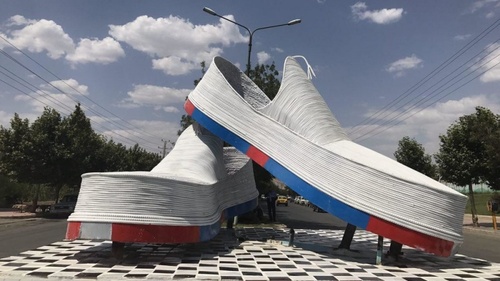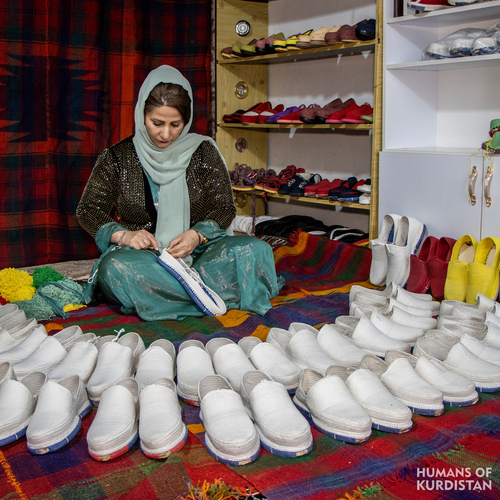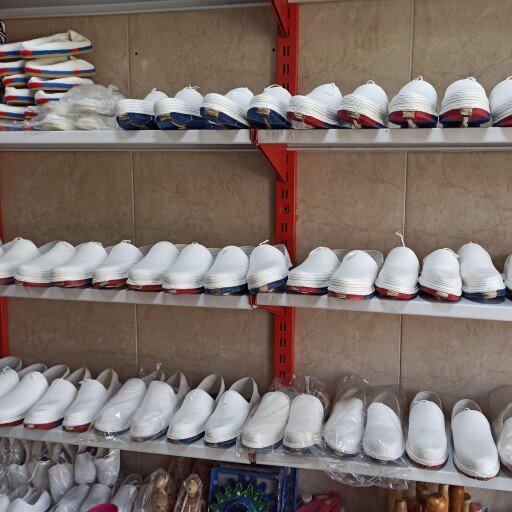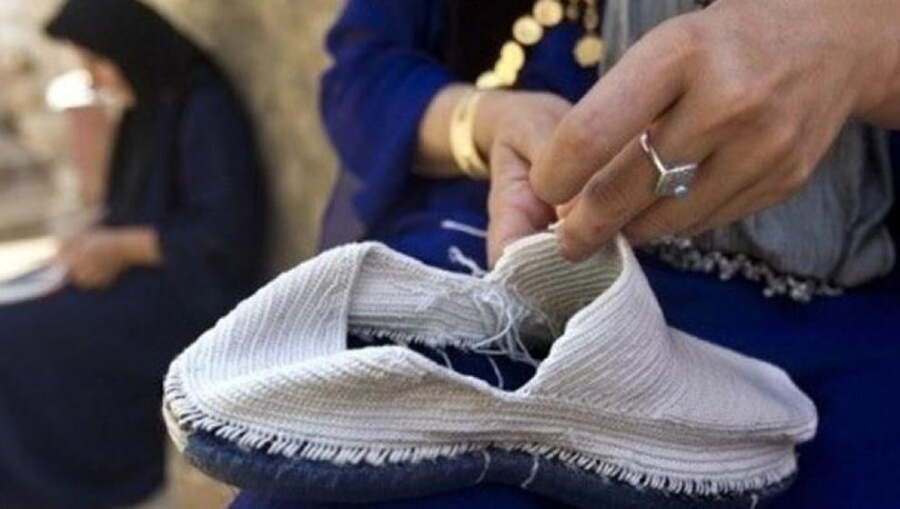A significant part of the income of the population of Sina province in the East part of Kurdistan is related to the production, services, and distribution of handicrafts. This sector can be considered an economic potential and ability for this province.
Kilash shoes are considered to be the most important handicraft of Sina province and this important industry, which is the handicraft of men and women of this country, is known not only in Iran but also in the world and has gained worldwide fame. Klash production is growing in this province and a large number of women and men are engaged in this work in the cities of Mariwan, Sawlawa, and Hawraman.

Mariwan is known as the Kilash-making capital of the world, and many women in the city are engaged in making Kilash shoes. Now, the main income of some villages in the Hawraman region, such as Niwen, Hajij, Kalji, Hawraman Takht, Palangan, Silen, Bilbar, etc. is obtained through the production of Kilash, and in this joint work, all family members participate according to their ability.
In Kilash production in the province, women play a greater role than other family members. About 75% of Kilash-making is done by women and the remaining 25% by men. The sole is often made by men because it requires more strength. The cooperation of the ladies is required for the top of the shoe, which requires greater precision and delicacy. Among the advantages of this type of shoe, we can mention the elimination of foot odor, prevention of worms and bacteria on the skin, coolness, and reduce back pain and foot pain, etc.
The price of Kilash varies in the province depending on the material used, usually ranging from 500000 Iranian Tomans ($10) to more than 1 million Iranian Tomans ($20).

Potentials that have a relative advantage in Kilash production include:
* Cheap labor force
* Expertise and expertise of the people in production
*The old occupation of the local people
* Cheap raw materials
The amount of Kilash production in the province cannot be estimated exactly, but about 300000 pairs of shoes are produced annually, the production of which can be increased by determining economic strategies.
The Kilash industry in the province has seen a decline due to the following reasons:
* Brokerage and centralization, so that the main profits of this profession do not go to the producers and the brokers receive the most profits.
* Lack of financial commitment between producers and brokers
* Lack of advanced equipment to increase production, which leads to a decrease in production.
* Lack of government support such as no union to balance prices, no sales market, no financial support for producers, and labor laws.

According to available statistics, about 80000 people work in this industry and directly and indirectly earn their living in the Kilash market. With the advent of online stores and activities in the virtual space, housewives are providing some income for household expenses by knitting kilash and selling them online.
Now, handicrafts, especially Kilash, play a major role in the export and trade of non-oil exports. Turkey and Iraq (North and South parts of Kurdistan) are the two main export destinations for East Kurdistan Kilash. On the other hand, high customs costs, especially in Iraq, are one of the reasons for illegal exports and Kilash owners prefer to export their products informally in order to make more profits. It is estimated that between 50000 and 70000 pairs of hats are exported from the East part of Kurdistan to the South and North parts of Kurdistan annually.









